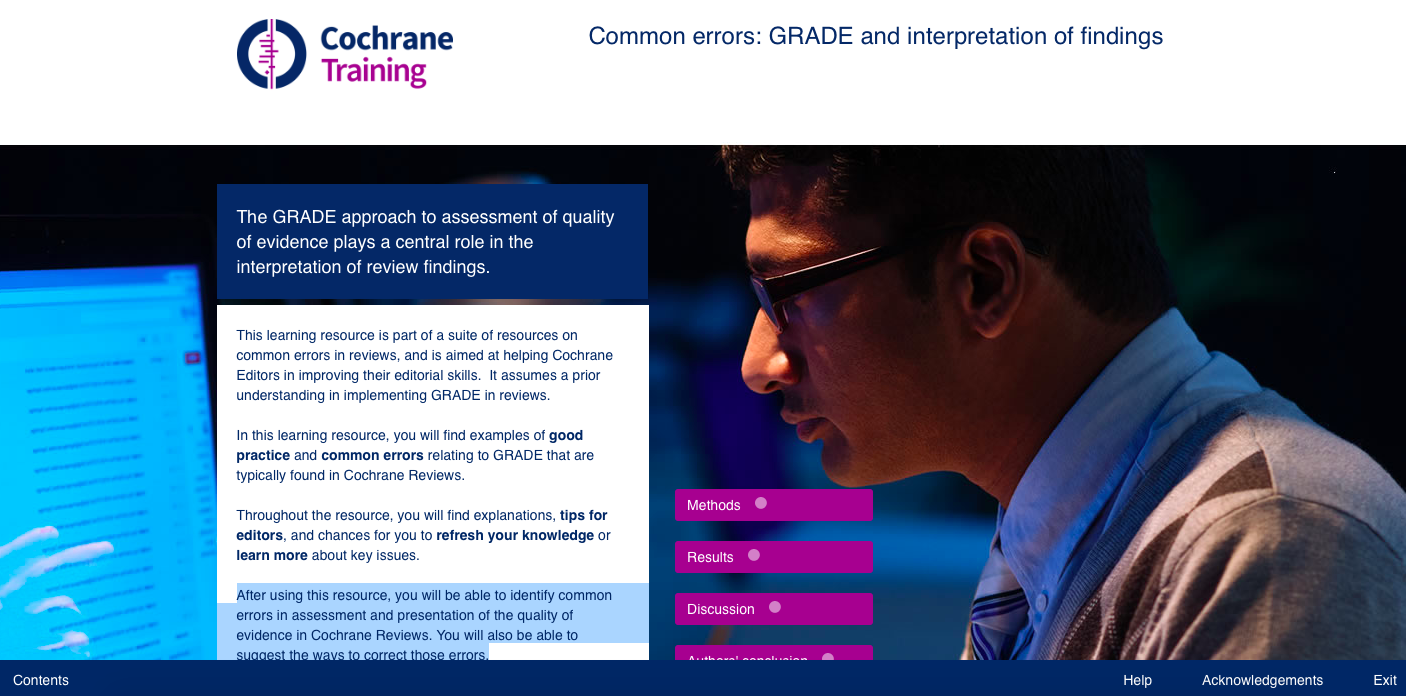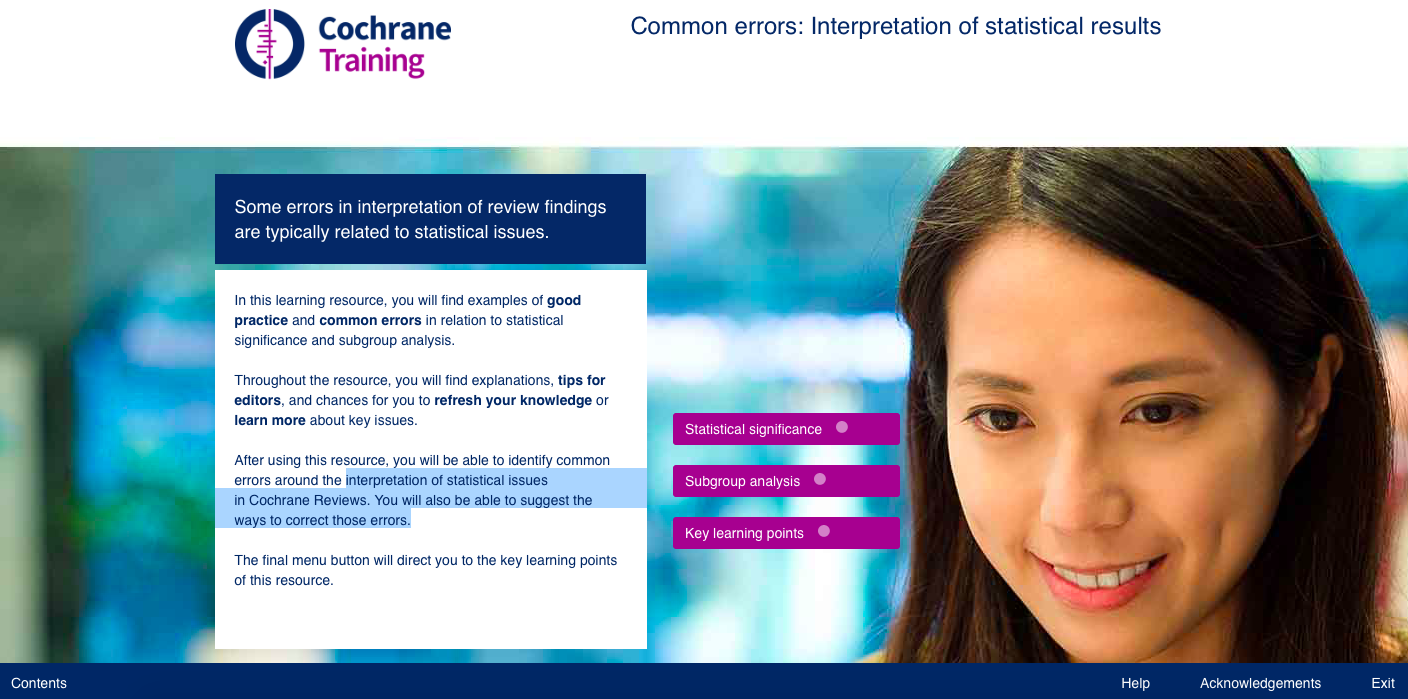COMMON ERRORS is a suite of five learning modules for Cochrane Editors to enhance their editorial skills. The modules are designed to help Editors learn to recognise and address many of the common errors that occur as Cochrane reviews are carried out.
Access the modules
The resource consists of four learning modules and an exercise module.
Click on the links below to open the individual Common Errors modules [these open in a new browser window].
- Inconsistency and inaccuracy
- GRADE and interpretation of findings
- Interpretation of statistical results
- Summary versions of a review
- Check your knowledge (exercise module)
You will need a Cochrane Account to access these modules. If you don’t have a Cochrane Account you will be able to register for **free** on the following page. You will be able to use this account for all future activity. If you have any problems, please contact training@cochrane.org
 Why have we developed this learning?
Why have we developed this learning?
The modules are underpinned by reports on common errors and good practice that Cochrane Editorial and Methods Department identifies through its ongoing review screening programme.
You'll learn from examining worked examples of common errors as well as good practice, and we also offer tools, tips and learning about key issues throughout
 How do the modules work?
How do the modules work?
Firstly, it's important to be clear that the modules are designed for Cochrane's Editors, and so they assume that you have a prior understanding in the review methods being presented. If you're wanting to learn about review methods themselves, you can find that elsewhere on the Cochrane Training website.
There are five modules available to access above. For the first four modules, there is no particular order: you can start where you like with an area you are most interested in. Learning is broken into little, five minute or so 'bites' of content. The fifth module presents a series of exercises on a fictitious review to check your knowledge about the issues covered in the first four modules.
Again, you can make your way through this as you please and we use icons throughout to present the different types of learning: examples of common errors, good practice, tools, tips, and so on.
Click on HELP in the bottom right of the module pages at any time to read more about the modules and the different icons.
